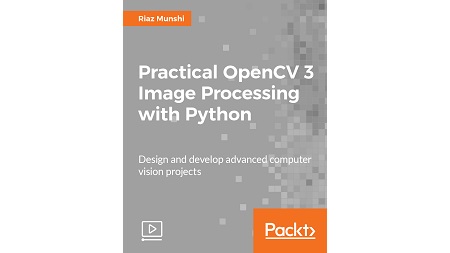
English | MP4 | AVC 1920×1080 | AAC 48KHz 2ch | 1h 50 | 501 MB
Get familiar with Open CV 3 and learn to build amazing computer vision applications
OpenCV is a native cross-platform C++ Library for computer vision, machine learning, and image processing. It is increasingly being adopted in Python for developing applications to process visual data such as photographs or videos. OpenCV has C++/C, Python, and Java interfaces with support for Windows, Linux, Mac, iOS, and Android, and offers extensive libraries with over 500 functions.
This video demonstrates how to develop a series of intermediate-to-advanced projects using OpenCV and Python, rather than teaching the core concepts of OpenCV in theoretical lessons. Instead, the working projects developed in this video teach the viewer how to apply their theoretical knowledge to topics such as image manipulation, augmented reality, object tracking, 3D scene reconstruction, statistical learning, and object categorization.
By the end of this video course, viewers will be OpenCV experts whose newly gained experience allows them to develop their own advanced computer vision applications.
What You Will Learn
- Learn Morphology and Open, Close operations
- Work with Histogram Generation and Manipulation
- Discover Background Subtraction from Images
- Build an Image Search Engine from Scratch based on feature extraction
- Explore scene understanding and automatic labeling from images
- Look into Delaunay Triangulation and Voronoi Tessellation
- Essentials of medical imaging and segmentation
- Apply image processing techniques
Table of Contents
01 The Course Overview
02 Learning about Hough Transformations
03 Stretch, Shrink, Warp, and Rotate Using OpenCV 3
04 Image Derivatives
05 Histogram Equalization
06 Reverse Image Search
07 Extracting Contours from Images
08 Template Matching for Object Detection
09 Background Subtraction from Images
10 Delaunay Triangulation and Voronoi Tessellation
11 Mean-Shift Segmentation
12 Medical Imaging and Segmentation
13 Harris Corner Detection
14 SIFT, SURF, FAST, BRIEF, and ORB Algorithms
15 Feature Matching and Homography to Recognize Objects
16 Mean-Shift, Cam-Shift, and Optical Flow
17 Feature Extraction Using Convolutional Neural Nets (CNNs)
18 Visual Object Recognition and Classification Using CNNs
Resolve the captcha to access the links!